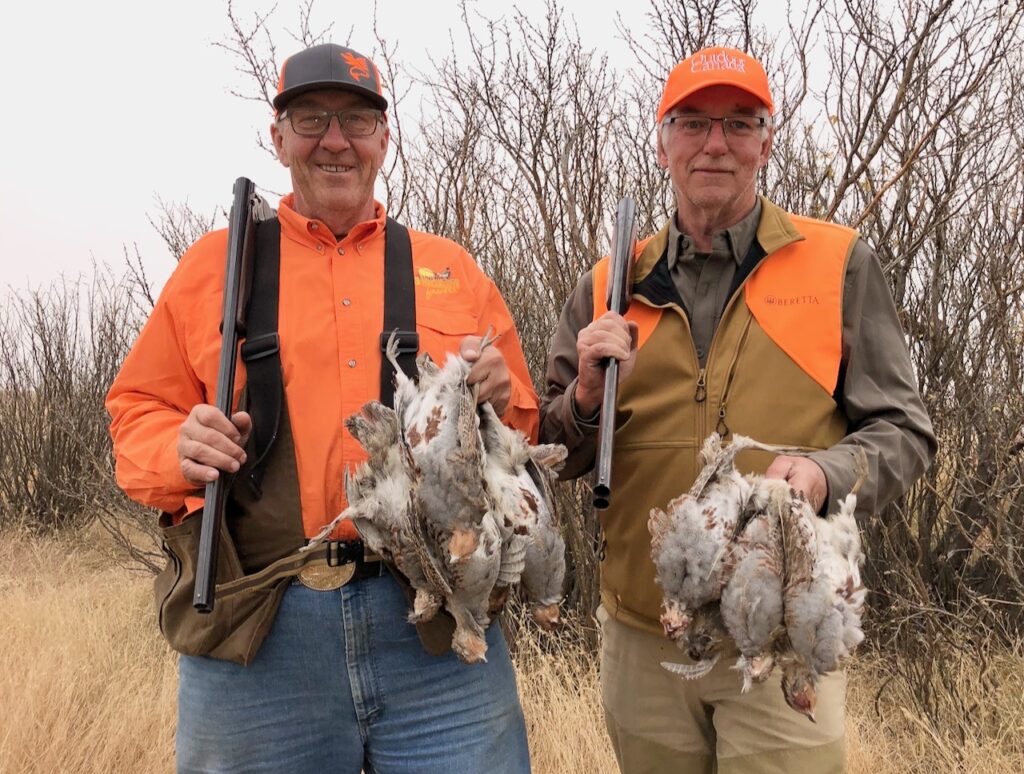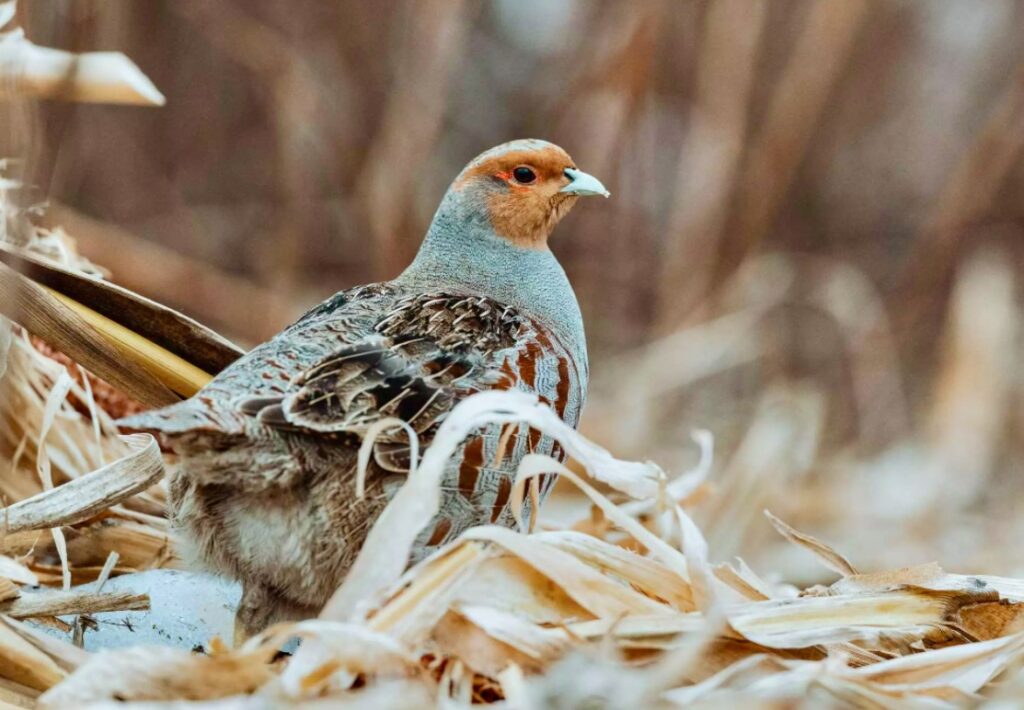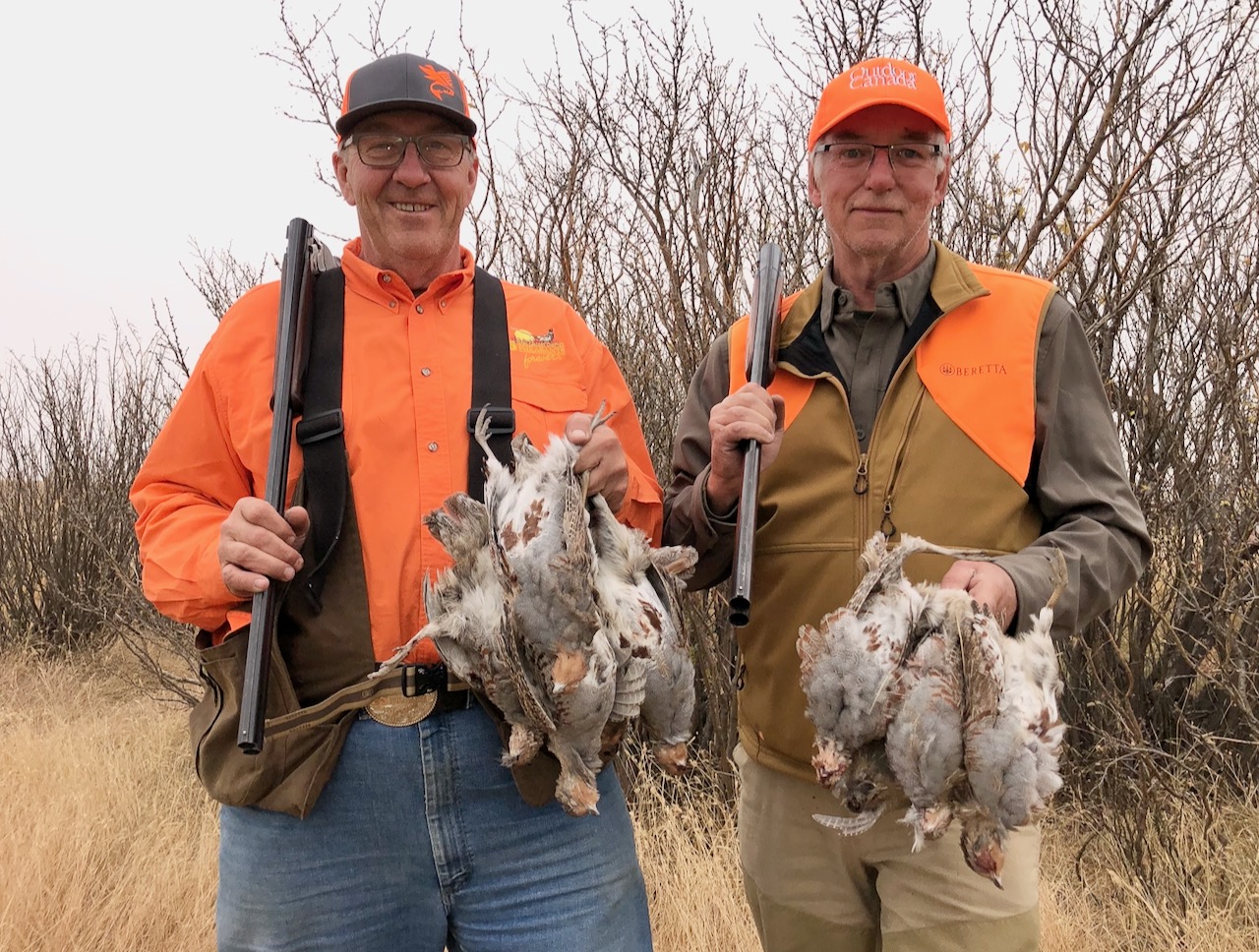ON THE HUNT FOR HUNS
To successfully pursue Hungarian partridge all season long, you need to switch up your approach in tandem with their changing behaviour
Advertisement

If pressed, I could make a strong argument that the Hungarian partridge is Canada’s greatest upland game bird. Some might assert that nothing matches the psychedelic explosion of colour as a cock pheasant bursts from cover, while others might expound on the traditions and formality of hunting the cryptic ruffed grouse, or the challenges of finding, then shooting, the elusive and migratory woodcock. But the Hun, as the Hungarian or grey partridge is most commonly called, represents everything a hunter could ask for in an upland bird, a tight bundle of spirited vitality, making it a challenge for gun dogs and gunners alike.
Though found intermittently from Nova Scotia to B.C., Huns are really a bird of the prairies, where they’ve outlasted the now extirpated prairie chicken and can survive where pheasants cannot. They’re also more popular with western hunters than sharp-tailed grouse.
Advertisement
Most hunters know the Hungarian partridge, as with the ring-necked pheasant, is not native to Canada. The first recorded release in this country occurred in 1908, just south of Calgary. Augmented by subsequent introductions, the species quickly established a foothold, and the inaugural hunting season took place just five years after the first release. Before long, releases were taking place in other provinces, with the little birds flourishing nearly everywhere they were introduced. They did so well in Alberta by 1942, in fact, that limits were 20 per day and 250 for the season.
Since Huns are an introduced bird from Europe, some may suggest they’re somehow undeserving of respect. Frankly, as a nation largely populated through immigration, particularly from Europe, I think the fact Huns are doing so well today only serves to underscore that they’re undeniably part of us, foreign origin or not.

One of the characteristics that have helped Huns assimilate so far from their native lands is that they’re extremely hardy little birds, able to withstand harsh prairie winters. As covey birds, they remain together as a group until spring, seeking protection from both the cold and the prying eyes of predators. The regular high winds across the prairies keep large areas free of snow, enabling Huns to find open places to feed, though they can also readily dig holes through the snow to reach waste grain and other foods. In extreme conditions, they’ll burrow into the snow to help insulate themselves from freezing nighttime temperatures. And when conditions are such that numbers crash, the birds are able to respond and quickly rebuild their numbers.
Advertisement
To the uninitiated, the best Hungarian partridge habitat looks like a barren sea of grain stubble fractured only by the occasional hedgerow, slough bottom or abandoned farmyard. To a Hun, however, this landscape provides ample food and shelter. And to an upland bird hunter, it’s a land of untold opportunity. The trick is finding these birds, and that can be a frustrating puzzle for hunters and their four-footed companions alike.

